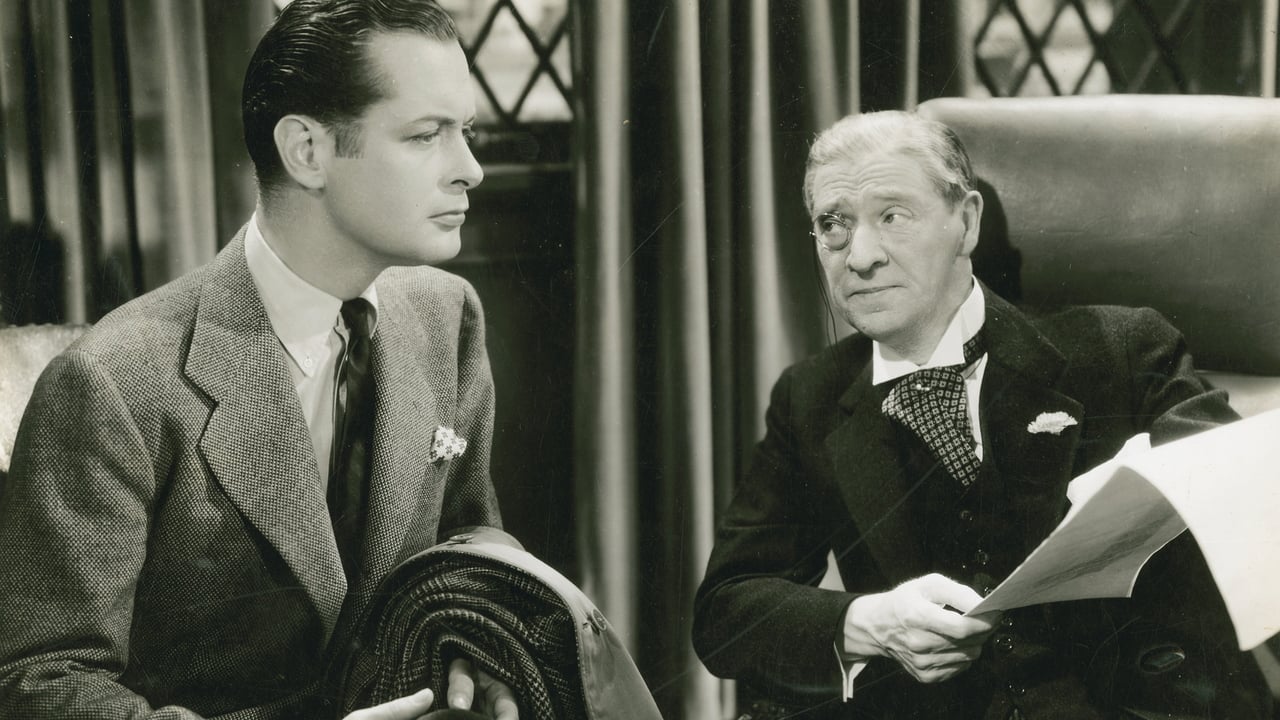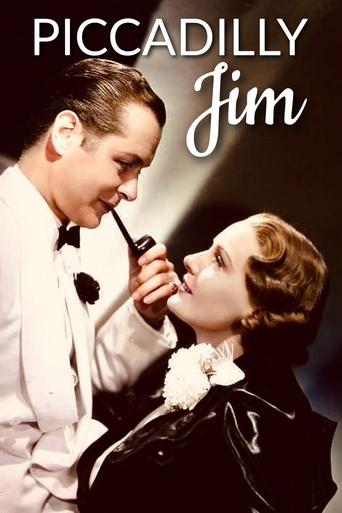TeenzTen
An action-packed slog
Fairaher
The film makes a home in your brain and the only cure is to see it again.
Jakoba
True to its essence, the characters remain on the same line and manage to entertain the viewer, each highlighting their own distinctive qualities or touches.
Jerrie
It's a good bad... and worth a popcorn matinée. While it's easy to lament what could have been...
csteidler
Robert Montgomery is smooth and snappy as the artist—er, newspaper cartoonist—known as "Piccadilly Jim." He introduces us to his father, unemployed actor Frank Morgan: "He does Shakespeare or nothing. In other words, nothing." Montgomery and Morgan lead a great cast in this very funny comedy of misunderstood motives and assumed identities. Madge Evans is witty and lovely as the girl Montgomery spots in a restaurant and then pursues from England to America. Their romance is, of course, full of bumps and misunderstandings; Evans and Montgomery make a great pair, both of them slightly less nutty than their families, and both completely beautiful and lovable. Madge's two aunts are also splendid. Cora Witherspoon is loud, bossy and funny as the social climber trying to prevent her female relatives from falling in love with the wrong men; and Billie Burke, who carries on a rather secretive affair with old smooth talker Morgan, is just about perfect—funny, sweet, slightly ditzy yet quietly knowing in her own way. The scenes between Burke and Morgan are really delightful—two great character actors at their absolute best.Eric Blore is hilarious as Montgomery's faithful and eminently correct valet; he completely refuses to be discouraged when his repeated attempts to tell an anecdote about Robert the Bruce are rebuffed.Besides the great cast, the direction is crisp and the script is excellent—a plot that is silly but holds together, packed with characters who are full of foibles but never really wicked. Lots of fun.
hcoursen
When the leading lady (Madge Evans) must explain why she likes her suitor (Ralph Forbes)and must contrast that attitude with her feelings for Robert Montgomery, you know the film is in trouble. Montgomery can say there's "electricity" between himself and Evans, but that spark is not transmitted to celluloid. And that is too bad, because the film is wittier -- per Wodehouse -- and better-acted than many films of the era. But Evans' loves and likings must be verbalized. The energy is simply not on the screen, only in the script. She is beautiful, though. She needed a different character -- more remote, more mysterious, more fearful of love. And then, maybe... Blore is wonderful, and lights up every scene he is in, as the butler who knows his Shakespere better than the ham, Frank Morgan. But this is one of Morgan's best roles. His only triumph, apparently, was as Osric, in Cedar Rapids. Now Osric is the foppish courtier at the end of 'Hamlet' -- hardly the role of a lifetime. But Morgan disguises himself as "Count Osric of Denmark" in order to infiltrate the family of his beloved (Billy Burke) and turns his failure as actor into personal success. It is a neat touch. Burke's flighty flutiness is hardly used in the film, but she does have a funny line about remembering how painful youth was. The Morgan-Burke romance is intended as a foil for the Montgomery-Evans courtship and that would have worked well had the main plot had more chemistry.
edwagreen
Supporting players Cora Witherspoon and Eric Blore steal the show in this funny 1936 film.A guy, (Robert Montgomery)who is a cartoonist and his father, a Shakespearian actor, who hasn't played Shakespeare in 20 years, (a very funny Frank Morgan) vie for the attention of two women.Morgan is after Billie Burke, from a wealthy family, who is a plain ordinary lady. The trouble is her sister, Nesta, played with an aristocratic humor by Witherspoon. She sees Morgan as a fortune hunter and tries to end the liaison. Montgomery starts a cartoon series based on the family which is soon a hit throughout England. Little does her know that the girl he is after is the niece of Witherspoon.There's a ship-board romance to America. Morgan dresses up as a European aristocrat to impress Witherspoon and her family. Further complications leads him to have the butler, Blore, play his father.The ending is predictable but it's funny to see how things entangle in this screwball comedy of 1936.
briantaves
In August, 1934, Metro-Goldwyn-Mayer offered $5,000 for the screen rights to the 1917 novel Piccadilly Jim, first filmed in 1919. The remake was initially to be produced by then M-G-M producer David O. Selznick in early 1935, with songs provided by Harold Adamson and Burton Lane. Rowland Lee was assigned by Selznick to complete work on the screenplay, which was initially written by Robert Benchley. J. Walter Ruben was set to direct, and Chester Hale had prepared dances.After two years of scripting by at least nine writers, the new version of PICCADILLY JIM became overlong, finally clocking at 100 minutes. One-time screenwriter Benchley joined the cast. Rather than a musical, PICCADILLY JIM turned into a vehicle for Robert Montgomery. As the title character, he was aptly cast, one of the few Hollywood comedians who could simultaneously play an Englishman who combined intelligent and "silly ass" traits. Equally appropriate were Eric Blore as his valet, Frank Morgan as his father (the elder Jim Crocker, an unemployed ham actor), and many of the supporting players. However, leading lady Madge Evans brought no sense of comedy to her role.As adapted for film, the story concerned how father and son both fall in love, not with the same woman, but with related women, although neither knows this, and Jim initially does not yet even know Ann's last name. When Jim's father is rejected as a suitor by the arrogant in-laws, the son conceives of a comic strip, "From Rags to Riches," centered around the dictatorial mother, the henpecked husband, and their obnoxious son Ogden. (Unlike the novel, in the movie Jim's nickname derives from his skill as a caricaturist, more than his reputation for late London nights.) When the strip becomes a hit, it makes further romantic progress impossible, but contractually Jim must continue drawing it. The family can't remain in England because they are so widely recognized, so the Crockers pursue their beloved to America, father in disguise, and son by concealing his true identity. Jim gradually changes the characterizations in the comic strip to make the family proud of the association, until only Ann, the niece, resists him.Little of this is from the book; the main thread in common is the Pett family, with its meek father and rambunctious child, the title character's newspaper experience, and a few brief chapters which become the middle third of the movie, in which Jim follows Ann on board a transatlantic ship, using the name of his butler and pretending he is his father. Many of the movie's elements which had appeared in the novel and were standard Wodehouse devices, such as the eccentric butler, the henpecked husband, and the use of disguise and masquerade, compounded by mistaken identity, were also typical conventions of 1930s romantic comedy. Genuinely amusing passages scattered throughout the film are finally overwhelmed by too many dull stretches. Although PICCADILLY JIM had potential, under the direction of Robert Z. Leonard (who had previously directed the estimable THE CARDBOARD LOVER) it fails to achieve the standard of many other more memorable comedies of the period. Nonetheless, this version of Piccadilly Jim, when compared with the 2004 remake, retains the spirit of Wodehouse, his tone and characterizations. The 1936 film is amusing and ideally cast, with a cast and crew who know how to make the brand of charming romantic comedy seemingly unique to that era. And despite its shortcomings, it succeeds in that regard, displaying the skills of the studio era that are so obviously absent in the confused 2004 version.

